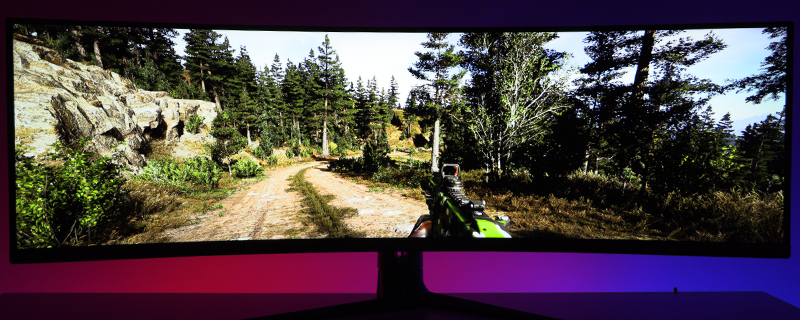AMD Freesync 2 HDR Preview
Introduction
It’s incredible to us how far computer graphics have come in a relatively short period of time. In the early days graphics were pretty bad, but they were the best that there was and so we didn’t mind. Our brains just smoothed out the edges and filled in the blanks in the same way they do when you’ve built something out of LEGO.
The big step change was the introduction of polygons, and particularly textured polygons. Anyone who was around to see the dawn of Daytona USA, or Wipeout will remember the jaw dropping nature of the graphics. Suddenly everything was in 3D and looked tremendous. A vision of the future. Lawnmower Man but available at 50 pence a play. If there was one thing that early polygon efforts couldn’t do well it was people. The Playstation 2/XBOX era tried hard, but without massive success, although it was certainly a boost over those of the original Playstation and Saturn. The next generation got close, but it’s only in the very recent times that people in games, and games themselves are able to be confused for real life. God Of War, Horizon Zero Dawn and similar titles are getting very close indeed to a state in which we’re not requiring our brains to fill in the blanks. But memory is a funny thing. If you played Crash or Spyro when you were young it was the greatest graphics you’d ever seen, but it’s not until you see the remasters that you realise how terrible the old games looked. We’re sure that in the future we’ll look back on current games and laugh at how we felt they were realistic.
Hardware manufacturers and gaming companies have tried a few different ways of improving the immersion of gaming. There was the ‘went as quickly as it came’ 3D displays requiring glasses of some description, and we’re currently in the middle of VR attempting to bring us deeper into the games. But, like 3D, any solution that can invoke vomiting in any percentage of the population will never be the future. Higher resolutions and better image quality is the key future technology. You only have to see how fast 4K became the next big thing and killed off 3D to realise that something suitable for everyone will always trump something suitable for most, no matter how great VR can be.
Image quality is everything. Now the models themselves are pretty spot on, then lighting and shadows become the one thing that separates reality from video games. Think back to those early PS2/XBOX efforts and it’s always the blob shadows that give away the lack of power, whereas now we not only have accurate shadows, but soft ones too. However, display technology has always meant that there is a problem with shadows either in terms of the lack of definition within them, or the darkness of the shadows itself. For a time Plasma screens were the main way that people tried to get the deepest blacks, but that technology had umpteen drawbacks, from cost to heat to burn-in.
That’s where HDR, High Dynamic Range, comes in. Promising to bring new levels of darkness whilst doing so on our lovely cool, affordable LED panels. AMD offered us the chance to take a look at the new HDR that comes along with their updated Freesync 2 technology, and we obviously jumped at the chance. It’s lovely to see the nascent tech that will soon be finding a home on desks and walls everywhere.
Naturally for this we needed a monitor which not only supported the latest iteration of the screen-tear blues ending Freesync technology, but also could support HDR gaming. Enter ASUS with their XG49VQ Strix panel, a 49″ behemoth that bestrides our desk like a colossus. Even though HDR is still fairly new there are enough titles on hand that we thought we could give you a glimpse of the benefits and the direction in which the future of gaming is heading.
Onwards!



